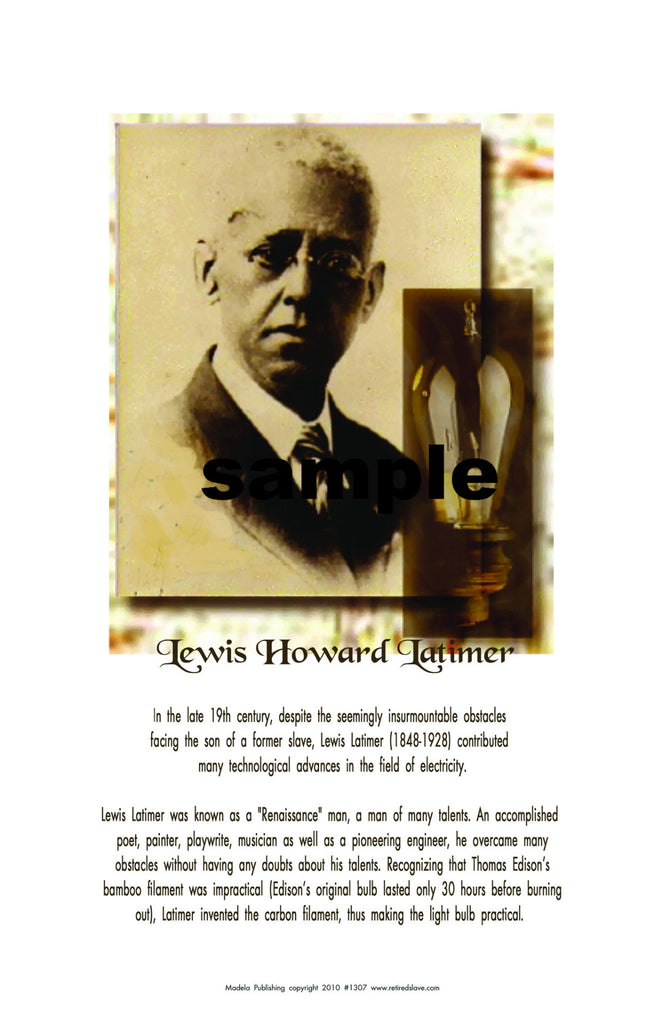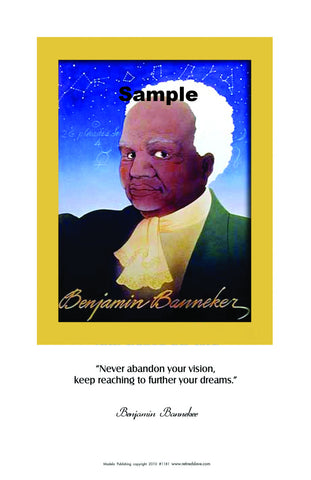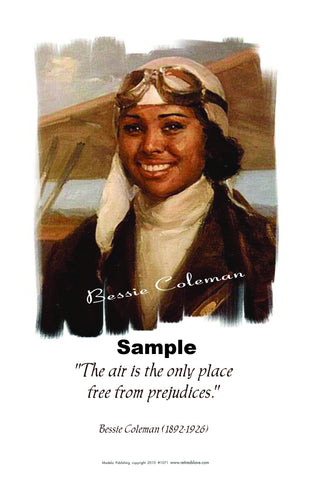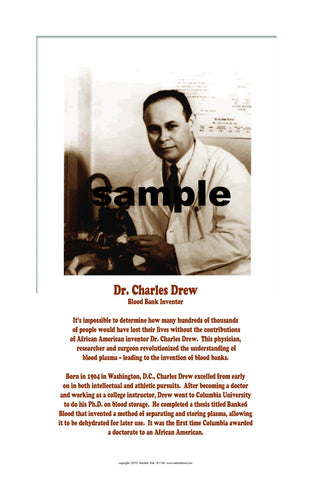Lewis Howard Latimer #1307
$ 10.00
Caption from poster__
" In the late 19th century, despite the seemingly
insurmountable obstacles facing the son of a
former slave, Lewis Latimer (1848-1928)
contributed many technological advances
in the field of electricity."
Lewis Latimer was known as a "Renaissance" man, a man of many talents.
An accomplished poet, painter, playwrite, musician as well as a pioneering
engineer, he overcame many obstacles without having any doubts about his
talents. Recognizing that Thomas Edison's bamboo filament was impractical
(Edison's original bulb lasted only 30 hours before burning out), Latimer
invented the carbon filament, thus making the light bulb practical.
He was born in Chelsea, Massachusetts on September 4, 1848 as the youngest of the four children of Rebecca (1826-1848) and George Latimer (July 4, 1818 [1] -c.1880). George Latimer had been the slave of James B. Gray of Virginia. George Latimer ran away to freedom in Boston, Massachusetts in October, 1842, along with his wife Rebecca, who had been the slave of another man. When Gray, the owner, appeared in Boston to take them back to Virginia, it became a noted case in the movement for abolition of slavery, gaining the involvement of such abolitionists as William Lloyd Garrison. Eventually funds were raised to pay Gray $400 for the freedom of George Latimer. One of Lewis' siblings was named William H. Latimer (1846-1892), who worked as a barber. He joined the U.S. Navy at the age of 16 on September 16, 1864. After receiving an honorable discharge from the Navy on July 3, 1865, he gained employment as an office boy with a patent law firm, Crosby Halstead and Gould, with a $3.00 per week salary. He learned how to use a L square, ruler, and other tools. Later, after his boss recognized his talent for sketching patent drawings, Latimer was promoted to the position of head draftsman earning $20.00 a week by 1878. He married Mary Wilson on December 10, 1873 and later had two daughters, Jeanett and Louise. Mary was born in Rhode Island. In 1874, he copatented (with Charles W. Brown) an improved toilet system for railroad cars called the Water Closet for Railroad Cars (U.S. Patent 147,363), the first of many patents. In 1876, Alexander Graham Bell employed Latimer to draft the necessary drawings required to receive a patent for Bell's telephone. He did this in his capacity as draftsman at the firm of Bell's patent law firm. In 1880, he moved to Bridgeport, Connecticut with his brother, William, his mother, Rebecca, and his wife. Lewis was hired as assistant manager and draftsman for the U.S. Electric Lighting Company, a company owned by Hiram Maxim, a rival of inventor Thomas Edison. Latimer received a patent in January 1882 for the "Process of Manufacturing Carbons", an improved method for the production of carbon filaments for lightbulb. The Edison Electric Light Company in New York City hired Latimer in 1884, as a draftsman and an expert witness in patent litigation about electric lights. Latimer was also an Edison Pioneer, a group of those that had worked for Edison companies over the years. Latimer never worked directly for Thomas Edison, or in Edison's lab. Latimer is an inductee of the National Inventors Hall of Fame for his work on electric filament manufacturing techniques.




